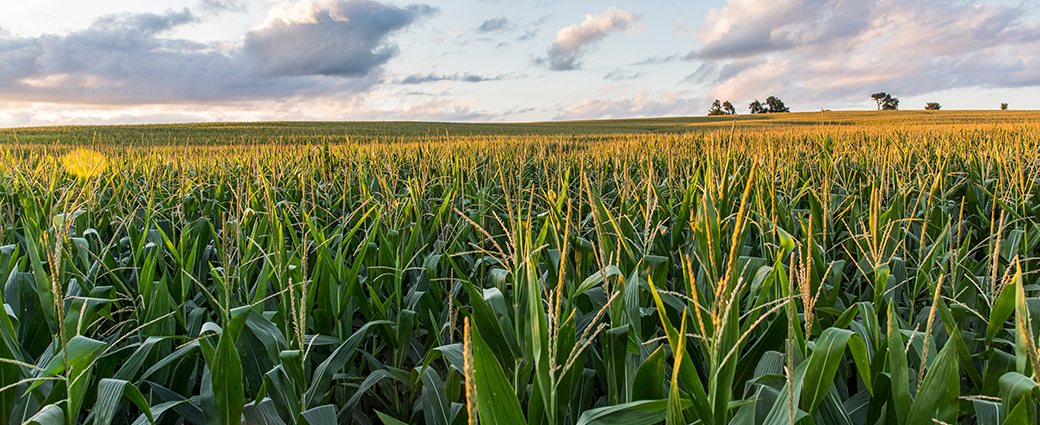Opportunities you’ve only heard of through the grapevine: private assets

We believe private real assets investment is a large and growing market. It’s an increasingly popular allocation for investors searching for sources of long-term income, protection from inflation, and reduced volatility. From farmland to commercial buildings, the very wealthiest of families have always owned real assets and institutional investors including multi-billion-dollar pension plans have followed their example by allocating to everything from timberland to cranberries for income and diversification.
The benefits of these assets have long been understood; our parent company Manulife, as an asset owner, has held real assets on its own balance sheet for more than 95 years as a means of adding diversification, risk-adjusted returns and market downside protection.¹ Furthermore, as investors discover that debt just doesn’t yield enough to meet their income needs, alternative sources of income are becoming increasingly important.
We see private real assets playing a bigger role in generating robust investment income that’s built to last, and thankfully, enjoying the benefits of real assets is no longer the preserve of a select few. Backed by Manulife’s rich heritage and Manulife Investment Management as a portfolio manager, we are able to make real assets that were once off limits to all but the very wealthiest families and institutional investors accessible to our high-net-worth clients too.²
What are real assets and what can they offer?
Enduring value
Private real assets include investments as diverse as airports, apartments, dams, farms, forests, and warehouses, yet they all share two defining features. First, they’re not publicly traded, and therefore they offer the potential to earn an illiquidity premium over mainstream markets. Second, their intrinsic value is rooted in what’s concrete, enduring, and essential, which, unlike more cyclical financial assets, tends to make real assets less vulnerable to unexpected changes in inflation, consumer preferences, and global growth. We believe when chosen carefully, certain private real assets such as real estate, timber, agriculture, and infrastructure, can also generate strong income.
Investors need to look beyond bonds for today’s best yields
Yields (%) by asset class, March 31, 2020³
Did you know? Manulife Private Wealth makes donations to the National Greening Program with Tree Canada dedicated to planting and nurturing trees across Canada. Last winter, Manulife Private Wealth helped plant seedlings in Ontario to support the reforestation impacted by historic logging and mining operations.
While real assets have several features in common, they are inherently diverse and can each deliver a unique set of qualities to a portfolio. Let’s take a closer look at some of the main forms of real assets available to high-net-worth investors:
Real estate
Real estate is a diverse asset class, spanning geographies, commercial property sectors, and property types. The five main types of commercial property are: office, industrial, retail, multi-family apartments and hotel. Nimbleness has never been more important for real estate investors in search of attractive and stable sources of income. Some segments remain better positioned than others, with office markets representing an open question. Others, such as multifamily housing, where demand remains stable, offer a brighter outlook. That said, we expect the global pandemic will alter the way people perceive, use, and invest in virtually all property types in future.
Did you know? Manulife Investment Management hosts beehives across five major Canadian cities: Vancouver, Calgary, Toronto, Ottawa, and Montreal. By hosting honeybees at real estate sites that we own, it gives them a chance to flourish, along with helping support food sources in the communities we serve. Honeybees are a vital part of our ecosystem and we are doing our part to help them thrive.
Agriculture
From a finite supply of arable land, the planet needs to nourish and sustain a global population that’s already grown to 7.8 billion and is expected to reach 9.8 billion by 2050.⁴ Recognizing the increasing challenge to feed the world, there’s been growing investor interest in farmland for permanent crops such as apples, pistachios, and wine grapes; and row crops such as corn, potatoes, and soy beans. While many independent factors drive income returns for farmland, the relatively inelastic demand for food products keeps the industry comparatively insulated from downturns in the economic cycle. In fact, we saw food purchases surge as people reacted to COVID-19 containment efforts by stockpiling their pantry shelves at home. Food and agriculture still function as defensive sectors, remaining less vulnerable to consumer spending curtailment than most goods and services.
Did you know? Manulife Private Wealth clients can enjoy a taste of real assets themselves. The same grapes provided to the J. Lohr winery are from a Manulife-owned vineyard. We also stock our own brand of honey from the beehives established on the rooftops of Manulife owned buildings!
Diversified real assets can help build portfolio resilience
Allocating to any type of private real asset may enhance a portfolio’s yield profile while reducing its price volatility relative to mainstream assets. However, in our experience, real assets work best when they work together. Gaining access to these categories without the right partner can be challenging, even for multibillion-dollar pension funds. That’s where Manulife Private Wealth can help. Thanks to Manulife’s long history as real asset owners and Manulife Investment Management as a portfolio manager, we’re able to offer access to previously off-limits investment opportunities to our high-net worth clients.2 As the next chapter in the search for yield begins, we believe investors can boost both the level and longevity of their portfolio income by lightening up on lower-yielding bonds—and leaning into a diversified allocation of private real assets.

We're here to help
To find out more about investing in real assets, please contact Manulife Private Wealth.²
1 Diversification does not guarantee a profit nor protect against loss in any market. Manulife has held real assets in its own balance sheet since 1925. 2 Investments subject to restrictions and availability. 3 Figures represent trailing 12-month cash yields as of March 31, 2020. Global real estate investment trusts represented by the FTSE EPRA/NAREIT Global Real Estate Index, which captures general trends in eligible real estate equities worldwide. Infrastructure represented by the MSCI World Infrastructure Index, which captures the global opportunity set of companies that are owners or operators of infrastructure assets. International equity is represented by the MSCI All Country World Index (ACWI) ex-U.S. Index, which tracks the performance of publicly traded large- and mid-cap stocks of companies in 22 developed markets and 23 emerging markets. U.S. commercial real estate is represented by the NCREIF Property Index (NPI). Agricultural farmland is represented by the NCREIF Farmland Index. U.S. equity represented by the MSCI USA Index, which tracks the performance of publicly traded large- and mid-cap stocks of the U.S. market. Timberland is represented by the NCREIF Timberland Property Index. U.S. Treasuries (10-year) represented by the 10-Year Treasury Constant Maturity Index, published by the U.S. Federal Reserve tracks the performance of a range of U.S. Treasuries, reflecting maturities that have been adjusted to the equivalent of a 10-year security. European governments (7–10 year) represented by the Bloomberg Barclays Euro Aggregate Treasury 7-10 Year Index. It is not possible to invest directly in an index. 4 worldpopulationhistory.org/map/2020/mercator/1/0/25/, 2020.
Important disclosure
Important disclosure
A widespread health crisis such as a global pandemic could cause substantial market volatility, exchange-trading suspensions and closures, and affect portfolio performance. For example, the novel coronavirus disease (COVID-19) has resulted in significant disruptions to global business activity. The impact of a health crisis and other epidemics and pandemics that may arise in the future could affect the global economy in ways that cannot necessarily be foreseen at the present time. A health crisis may exacerbate other pre-existing political, social, and economic risks. Any such impact could adversely affect the portfolio’s performance, resulting in losses to your investment.
This material was prepared solely for educational and informational purposes and does not constitute a recommendation, professional advice, an offer, solicitation, or an invitation by or on behalf of Manulife Investment Management to any person to buy or sell any security. Nothing in this material constitutes investment, legal, accounting, or tax advice, or a representation that any investment or strategy is suitable or appropriate to your individual circumstances, or otherwise constitutes a personal recommendation to you.
Investing involves risks, including the potential loss of principal. Financial markets are volatile and can fluctuate significantly in response to company, industry, political, regulatory, market, or economic developments.
Past performance does not guarantee future results, and you should not rely on it as the basis for making an investment decision.
Diversification does not guarantee a profit or protect against loss in any market.
Neither Manulife Private Wealth nor any other companies in the Manulife Financial Corporation (MFC) group are acting as an advisor or fiduciary to or for any recipient of this report unless otherwise agreed in writing. Neither Manulife Private Wealth or its affiliates, nor any of their directors, officers, or employees, shall assume any liability or responsibility for any direct or indirect loss or damage or any other consequence of any person acting or not acting in reliance on the information contained here. Manulife Private Wealth does not provide legal or tax advice, and you are encouraged to consult your own lawyer, accountant, or other advisors before making any financial decision. Prospective investors should take appropriate professional advice before making any investment decisions.
All opinions expressed were obtained from sources believed to be reliable and in good faith, no representation or warranty, expressed or implied, is made as to its accuracy or completeness. The information in this material may contain projections or other forward-looking statements regarding future events, targets, management discipline, or other expectations, and is only as current as of the date indicated. The information in this document, including statements concerning financial market trends, are based on current market conditions, which will fluctuate and may be superseded by subsequent market events or for other reasons. Manulife Private Wealth disclaims any responsibility to update such information. Should you have any questions, please contact or ask to speak to a member of Manulife Private Wealth.
Manulife Private Wealth is a division of Manulife Investment Management Limited and Manulife Investment Management Distributors Inc. Investment services are offered by Manulife Investment Management Limited and/or Manulife Investment Management Distributors Inc. Banking services and products are offered by Manulife Bank of Canada. Wealth and estate services are offered by The Manufacturers Life Insurance Company.
Manulife, Manulife & Stylized M Design, Stylized M Design, and Manulife Private Wealth are trademarks of The Manufacturers Life Insurance Company and are used by it, and by its affiliates under license. This information does not replace or supersede KYC (know your client) suitability, needs analysis or any other regulatory requirements.
